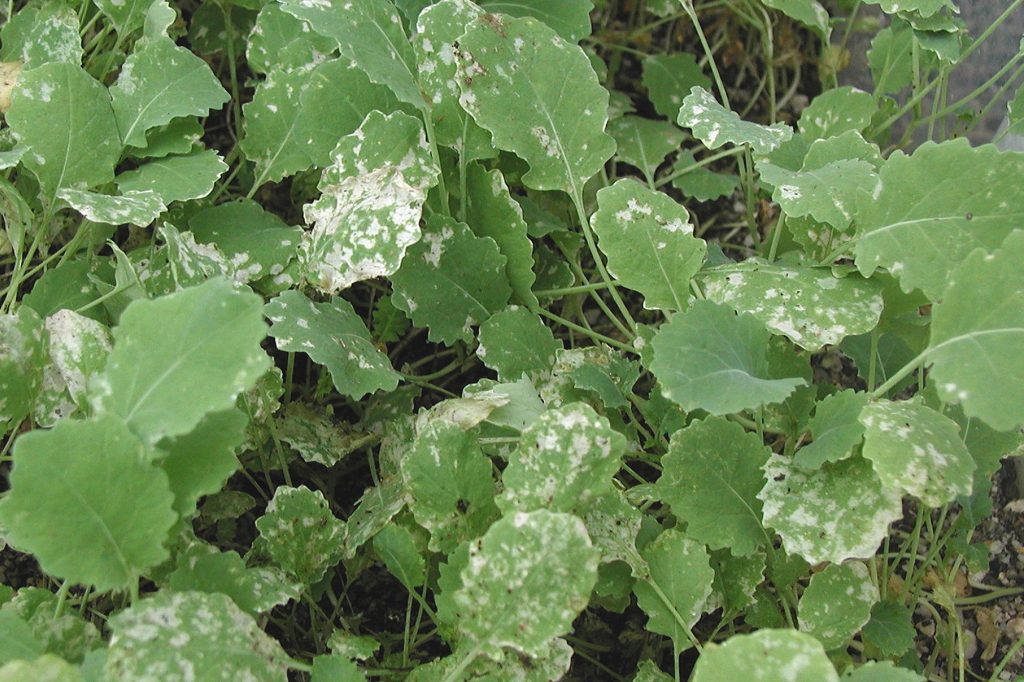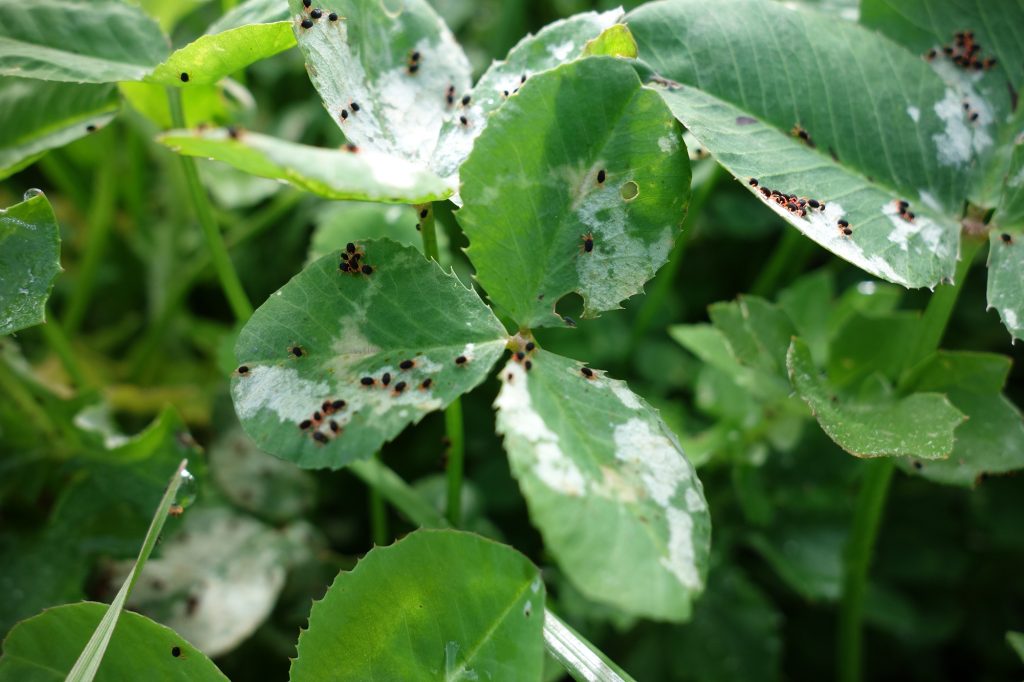Redlegged earth mite didn’t get the name Halotydeus destructor for nothing, they can cause significant damage to crops, especially during seedling establishment. This species has also shown the ability to evolve insecticide resistance, so it can be a difficult one to manage. Here, we will explain how to predict when the redlegged earth mite will hatch and how to monitor and forecast likely risks associated with mites.
How to know when eggs might hatch
Redlegged earth mites enter diapause over summer and emerge from this diapause as the weather becomes more favourable, so their early-season management relies strongly on the timing of hatching of summer diapause eggs. From previous research it is known that redlegged earth mite eggs in south-eastern Australia hatch after 5mm of rain over 5 days, followed by 10 days of mean temperatures below 16 degrees Celsius.
This information allows us to use weather data (maximum/minimum temperatures and rainfall) to predict when the redlegged earth mites will hatch in different regions each season.
Predictions for 2021
While most of Victoria and southern NSW would normally expect to see egg-hatch starting in mid-April there are signs it could be earlier this year.
This year we have had a wet and cooler than average start to the season in many regions, so the redlegged earth mite prediction models are showing earlier than average hatching dates, especially in the Bendigo and Ballarat regions where hatching may start to occur in the next few weeks.
The predicted hatch dates for Wagga Wagga, Hamilton and Albury are in the second week of April, and Hopetoun has not yet reached the temperature or rainfall thresholds for hatching. It is possible that hatch rates can be staggered across different regions.
As these are only predictions, it is important to understand that the modelling data does not guarantee an outbreak, or even that eggs will hatch soon, depending on how the weather continues over the next few months.
This cool start to the season might be a false break causing mite eggs to hatch but then fail to develop if the conditions do not continue to be suitable (e.g. if we get some warm, dry Autumn weather or if there is not adequate food available).
What to look for
Establishing crops should be monitored regularly for the presences of mites and their damage.
Redlegged earth mites look similar to other common mites in broadacre crops and pastures but can be identified by their black rounded bodies with a uniform, velvety appearance (compared with the blue oat mite which has a shiny blue black coloured body).
These mites are about 1mm in length and are often found on the foliage of plants. The presence of these pests can be determined by visual inspection of plants. The adult mites are most visible feeding on plants in the early morning or on overcast days.
Redlegged earth mites can also be detected by evidence of feeding damage which includes silvering or white discoloration of leaves and distortion or shrivelling in severe infestations. Affected seedlings can die at emergence with high mite populations.

When feeding, this species is often seen in large groups, a behaviour that distinguishes redlegged earth mite from other mite pests such as blue oat mites, Bryobia mites and the Balaustium mite, which tend to feed singly or in small numbers.
If mites are not present on foliage, inspect the soil also – only a small proportion of redlegged earth mite populations feed on foliage at any one time, with the large majority remaining on the soil surface.
Are you at risk from redlegged earth mite this year?
The severity risk assessment tool is featured in the ‘Redlegged earth mite: best management practice guide’, created by Cesar Australia, Birchip Cropping Group and SARDI, and is available for download through the GRDC website.
There are several factors taken into consideration when using this tool to predict whether the redlegged earth mite will be a problem in a paddock each year.
These include:
- The type of crop last year
- The type of crop this year
- The extent of broadleaf weed cover in the paddock
- The presence of redlegged earth mite in previous years
- The spray history of the paddock
A series of questions can be used to assist growers and advisers in weighing up these various factors to calculate a ‘redlegged earth mite risk-rating’ for individual paddocks. Responses have a designated ‘weighting’ score between -3 and 3.
For example, if last year’s crop was undersown with clover a score of 2 is assigned. But, if cereals were in the paddock last year, a lower score of 0 is assigned as the environment would not have been as conducive to a build-up of redlegged earth mite as with clover.

Management
The severity risk assessment approach described above uses the sum of the weighted scores (low <0, medium 0-5 or high-risk >5) to determine any management actions likely to be needed, including if TimeRite® should be used later in the season.
It is important to note that redlegged earth mite has shown evidence of resistance to insecticides in Australia, so we don’t encourage annual, routine spraying.
Capeweed and other broadleaf weeds act as retreats and food sources for redlegged earth mite, particularly early in the season when there is less food available from annual crops, so weed control can play a large part in management.
Interactive Risk Calculator
Recently, through the project ‘Future options for the control of RLEM in Australian grain crops’ (CES2010-001RTX) the project team have developed an online, interactive risk calculator based on this best practice guide.
We would be interested to hear your feedback on the risk calculator: do you find it easy to use? Do the risk assessments reflect what you see in your paddock?
Feedback can be sent to pestfacts@cesaraustralia.com
Acknowledgements
Thanks to Dr Garry McDonald for information on the redlegged earth mite, and also to Dr Paul Umina and Dr Jessica Lye for assisting with the development of this article.
Cover image: Photo by Andrew Weeks, Cesar Australia





